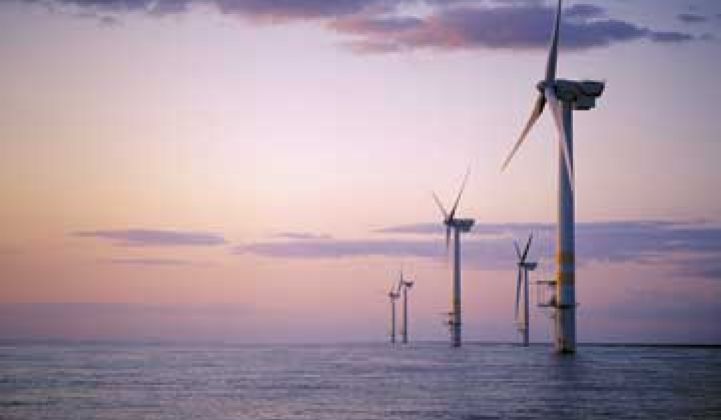Move over California. Scotland has ambitious smart grid plans, to say the least. The country will need to see those plans through if it is going to reach its 2020 goal of having 100 percent of its energy capable of being provided by renewables.
The recently released Scottish Smart Grid Sector Strategy includes jobs for 12,000 people in smart grid and another 28,000 in wind, potential microgrids on outlying islands, smart meters at every home and business, and harnessing enough offshore wind to power Scotland and export excess power to other countries. More than £7.7 billion ($12 billion) has been approved for infrastructure projects alone.
“The strategy that we've got is that what we are trying to do is look at it holistically, well beyond the physical infrastructure,” said Andy McDonald, director of renewables and clean energy at Scottish Enterprise, a business development organization that helped draft the strategy.
Rather than just adding in transmission capabilities or just smart meters, the strategy touches on all areas of smart grid, with a careful focus on ensuring that customers know, and receive, the benefits of the investment. Pilot projects will be designed as accelerators for commercialization of new technologies, rather than one-off tryouts. There will also be a focus on bringing in companies that could apply their technologies to the smart grid, such as telecoms and software engineers.
“We are an innovative country with a strong company base and entrepreneurial spirit. Initially, around 150 Scottish companies have been identified as having a potential role to play in smart grids, and we will work closely with them as they investigate the opportunities to diversify and seize new market opportunities ahead of the competition,” Lena Wilson, chief executive of Scottish Enterprise, said in a statement.
The strategy is centered on a working group, which currently includes SSE, Scottish Power, GE Energy, Cisco, University of Strathclyde and Scottish Enterprise in consultation with Highlands and Islands Enterprise, Skills Development Scotland, Scottish Development International and Consumer Focus Scotland.
At the heart of the need for smart grid is the 100 percent renewable goal for 2020. Currently, renewables make up about 35 percent of Scotland’s generation. However, even if the country develops 100 percent renewables for available generation, it is likely that there would still be some baseline generation used.
Scotland is not alone in its ambitious plans. The entire U.K. has a mandate for a full smart meter rollout by 2020, and all of the European Union has a goal of 20 percent renewables by 2020.
However, Scotland is looking to do more than just meet mandates. It has an overarching vision to merge power engineering with information and communications technologies and launch new business models for its energy suppliers. The latter is an area in which the U.K. will likely lead, with energy suppliers shifting to service providers.
The proposal does not go as far as to say what type of networks Scotland will need to manage up to 100 percent renewables within the decade, but there is an awareness that it will have to be supported by an entire new workforce with the right technical training coming out of universities.
Many Scottish universities have already formed an Energy Technology Partnership to collaborate on smart grid research. The government is also supporting thousands of modern apprentices in the energy and low-carbon sector in coming years.
Of course, heavy infrastructure is a part of the picture as well, with various high voltage DC cables being planned for offshore wind.
Scotland is already moving forward with various pilots to test new distribution networks at Universities and on Orkney Island, where a new network is already integrating high levels of renewables by managing generation in real time to match network capacity. The network, developed at the University of Strathclyde, helped avoid traditional network upgrades that would have cost £30 million ($46 million). Instead the network cost about £500,000 ($775,000).
The country is hoping to replicate the success of Orkney Island by helping other local communities assess their renewable energy needs and help bring in the technology necessary. Consumer education and focus is an enormous part of the effort as well, with various plans to help homes and businesses leverage new energy tools to their benefit. “One big part of the change in all of this is how the consumer benefits,” said McDonald. “You can’t ignore the fact that this is going to happen, so you have to focus on how the consumer will take it up.”



